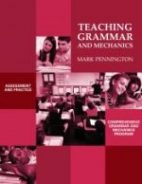Ten Tips to Improving Writing Coherency
Ten Tips to Improving Writing Coherency
Writing coherency refers to how well sentences and paragraphs are organized into an understandable whole. Good writing coherency is reader-centered. From the reader’s point of view, the train of thought must be connected, easy to follow, and make sense. Incoherent writing is inconsiderate to the reader. If the writing lacks coherency, the reader’s comprehension and enjoyment of that writing will decrease. A reader may have to re-read, be forced to use too many context clues to understand what is being said, or make an undue amount of inferences.
To improve coherency, writers need to ensure that their writing has these characteristics:
1. Predictable Paragraph Organization– To maintain optimal coherency, organize paragraphs in the way that readers are accustomed. For example, unless there is a compelling reason to do otherwise, place the topic sentence in the first position of the paragraph. The topic sentence appears in the first position of the paragraph 80% of the time in expository writing. Because of this high percentage, readers expect the main idea of the paragraph to be in this position. Similarly, the thesis statement appears 50% of the time as the last sentence in an essay introduction, so follow this practice as well.
Additionally, the Ancient Greeks developed the rhetorical rules for our writing, and these rules dictate that the most important idea in any communication needs to be stated first. Organize paragraphs with customary and traditional structures to be considerate to your reader.
2. Comprehensible Sentence Structure- Again, toe the line with those Ancient Greeks. English follows suit by placing the most important words at the beginning of the sentence. In the sentence: “You need to mail that letter today,” the emphasis is on the action. In the sentence: “Today, you need to mail that letter,” the emphasis is on the time. English grammar is very flexible in its forms and so can emphasize words with many different grammatical constructions. See How to Improve Sentence Variety with Grammatical Sentence Openers for examples.
Vary the length of sentences. Charles Dickens can be difficult to read because of his notoriously long-winded sentences. A good rule of thumb is to never place two long sentences next to each other. Of course, short staccato sentences can get irritating, as well. Strive for balance in sentence length to increase reader understanding and concentration.
3. Repetition- Repeat key words, phrases, or clauses to build coherency. Martin Luther King, Jr. used the “I have a dream” clause nine different times in his short speech. Also, write with parallel grammatical structures such as in Abraham Lincoln’s “conceived in liberty, and dedicated to the proposition that all men are created equal.” Notice the repeated “_ed” past participles, each followed by prepositional phrases.
4. Effective Sentence Transitions- Use, but don’t over use, transition words and phrases at the beginnings of sentences to connect to previous thoughts. Remember that most transitions at the beginning of sentences are followed by a comma, except in short sentences. A helpful list follows.
The author’s TEACHING ESSAYS BUNDLE provides 11 Transition Worksheets, one for each purpose. Each worksheet requires students to identify, select, and apply the transition words in the context of sentences and paragraphs. Great practice! Check out the free samples below.
Get the Transition Worksheets FREE Resource:
![]()
5. Clear Pronouns- A pronoun takes the place of a proper (named) or common (unnamed) noun. Using clear pronoun references will improve reader understanding of your writing. Always place pronoun references close to the nouns which they represent. If in doubt, simply repeat the noun. For example, in the sentence: “The dog traveled over the hill, chased a bunny, drank from a stream, terrorized a stray cat, and than it returned home,” the it pronoun does not clearly describe the antecedent dog. The sentence would be more coherent as “The dog enjoyed many adventures before it returned home: traveling over a hill, chasing a bunny, drinking from a stream, and terrorizing a cat.”
6. Clear Modifiers- A modifier is a word, phrase, or clause that acts as an adjective or adverb to define or limit the meaning of another word or phrase. For example, in the sentence: “Thrown in the air, the dog fetched the Frisbee®,” the phrase “Thrown in the air” is a classic dangling modifier. The reader may be confused into thinking that the dog, not the disc, was the one thrown into the air. To prevent dangling modifiers, always place modifiers close to the nouns or verbs that they intend to modify. The above sentence would better be written as “Thrown in the air, the Frisbee® was fetched by the dog” (albeit in passive voice).
7. Precise Word Choice– Use specific, rather than vague, meaningless words. For example, instead of “Many things caused the recession,” replace with “Decreasing consumer confidence and high gas prices caused the recession.” Use words that fit your audience. Avoid technical or academic language when simple words will suffice, unless your readers are well-acquainted with the terminology. Be courteous to your reader and define unfamiliar words to improve coherence.
8. Appropriate Conjunctions- The common coordinating conjunctions: for, and, nor, but, or, yet, and so (F.A.N.B.O.Y.S.) each have precise meanings and need to be used correctly to maintain coherency. For example, the sentence: “He needed money for paying expenses,” does not correctly use the conjunction for. The sentence suggests that money is the medium of exchange for paying expenses, rather than a necessary prerequisite for paying expenses. Using the conjunction so would create better sentence coherency as in “He needed money so he could pay expenses.”
9. Limited Passive Voice- In passive voice, the subject receives the action with the use of a passive verb. A passive verb combines a “to-be” verb with a past participle (_d, _ed, or _en ending). For example, is practiced, was doubted, had been eaten. Instead, use the active voice in which the subject does the action. For example, “John ran to the post office.” Passive voice can be used intentionally to emphasize objectivity, such as in “It has been shown in educational research that more women than men….” Otherwise, avoid the passive voice.
10. Brevity- Using concise language builds reader understanding. Readers lose focus, if the writing is verbose. Rather than “It would certainly be very nice if you would please consider it in your heart to take out the trash,” replace with the simple and to the point “Please take out the trash.”
Following are examples of an incoherent paragraph and a coherent revision of that same paragraph. Try revising the incoherent model, using the Ten Tips to Improve Writing Coherency before looking at the revision to see if you can apply these tips.
Incoherent Writing Model
Snow creates problems. Streets need shoveling. Snowplows cannot always access streets. Driveways are hard to clear. Many communities leave the expense of clearing snow up to the homeowner. Building up dangerously high on a roof, it can break roof framing. Snow may seem harmless. It can damage houses. Snow is always potentially hazardous. It can endanger people.
Coherent Revision
Snow creates two problems for homeowners. First, it requires shoveling to keep driveways and streets clear, but snowplows cannot always access them. Furthermore, many communities leave the expense of clearing snow up to the homeowner; thus some homeowners cannot afford the expense of hiring a snowplow. Second, snow may seem harmless, yet it is not. Snow can build up dangerously high on a roof and break roof framing. Always potentially hazardous, snow can damage houses and endanger those who live in them.
Also, check out Mark Pennington’s articles on writing unity and parallelism.
*****

TEACHING ESSAYS BUNDLE
The author’s TEACHING ESSAYS BUNDLE includes the three printable and digital resources students need to master the CCSS W.1 argumentative and W.2 informational/explanatory essays. Each no-prep resource allows students to work at their own paces via mastery learning. How to Teach Essays includes 42 skill-based essay strategy worksheets (fillable PDFs and 62 Google slides), beginning with simple 3-word paragraphs and proceeding step-by-step to complex multi-paragraph essays. One skill builds upon another. The Essay Skills Worksheets include 97 worksheets (printables and 97 Google slides) to help teachers differentiate writing instruction with both remedial and advanced writing skills. The Eight Writing Process Essays (printables and 170 Google slides) each feature an on-demand diagnostic essay assessment, writing prompt with connected reading, brainstorming, graphic organizer, response, revision, and editing activities. Plus, each essay includes a detailed analytical (not holistic) rubric for assessment-based learning.








